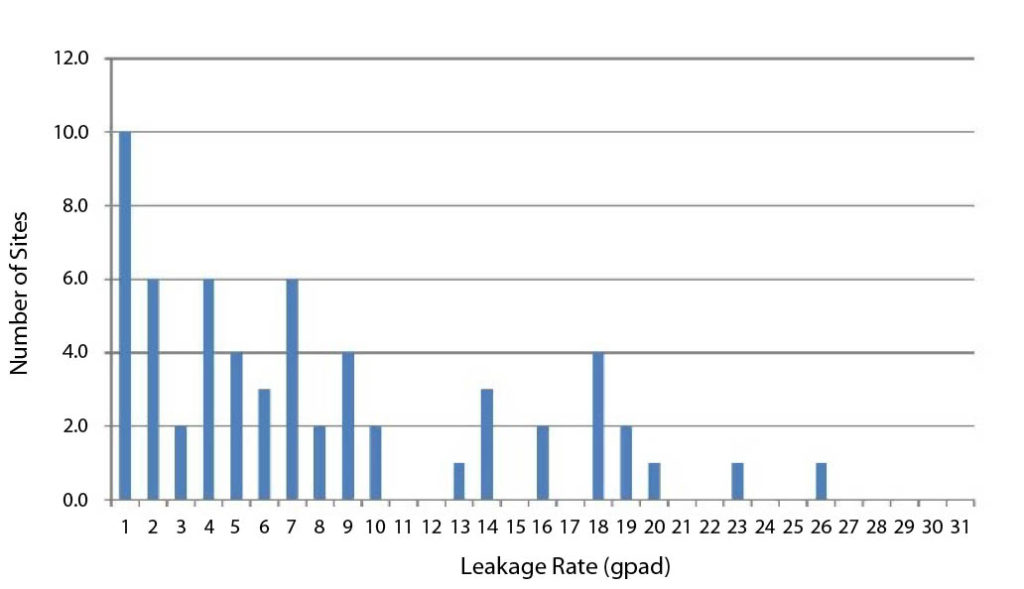Q: What is the anticipated leakage rate through a composite liner (i.e., geomembrane on low-permeability soil) system?
A: The best way to answer this is with data. Action leakage rates (ALRs) are design targets for landfill containment facilities. Accurate estimations of liner system leakage are crucial for assessing the environmental impact of landfill containment systems. At right are graphs that illustrate leakage rates at sites in the U.S. with double composite liner systems and leak detection. They were obtained from the following sources:
Figure 1: Gilson-Beck, A. (2022). “Technologies for reducing the risk of landfill leakage,” Global Waste Management Symposium (GWMS), Indian Wells, Calif., USA, Waste 360, 115–121.

Figure 2: Bonaparte, R., Daniel, D. E., and Koerner, R. M. (2002). “Assessment and recommendations for improving the performance of waste containment systems,” U.S. Environmental Protection Agency, Washington, D.C., EPA/600/R-02/099 (NTIS PB2003-103048).

In all cases illustrated, the data is from double-lined cells that have a very high level of installation quality and construction quality assurance (CQA). These sites utilize a systems approach of good design by professional engineers, quality materials, accredited testing, best available installation by certified installers, quality assurance by certified inspectors, electrical leak integrity survey prior to commissioning facility, and careful operations and maintenance.
Two things should be noted:
Most facilities must maintain a leakage rate under 20 gallons per acre per day (187 L/ha) or else they cannot be permitted.
The leakage rates are not zero, which indicates we still have room for improvement.
 TEXTILES.ORG
TEXTILES.ORG


